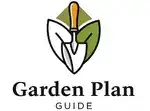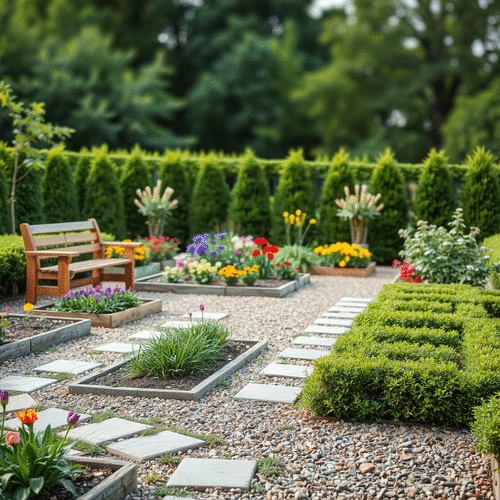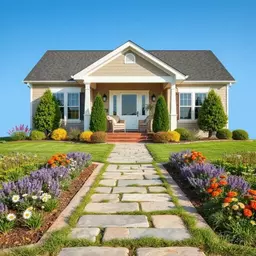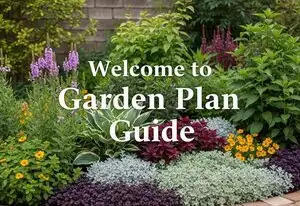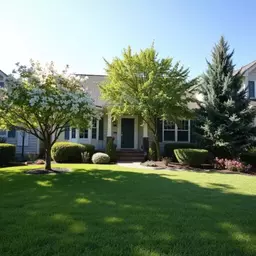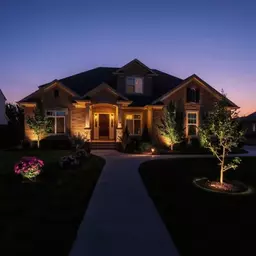Gardening is not just a hobby; it's a journey that requires careful planning and creativity. If you want to cultivate a thriving outdoor space, understanding the importance of a structured garden layout is essential. A well-organized garden can transform your backyard into a vibrant sanctuary that brings joy and tranquility.
What You Will Learn
- A structured garden layout enhances plant growth and health by providing adequate space and resources.
- Different zones in a garden, such as planting beds, pathways, and seating areas, serve specific purposes for better organization.
- Adapting your garden layout according to seasonal changes maximizes plant potential and keeps your garden vibrant year-round.
- Eco-friendly practices, like using native plants and composting, contribute to a sustainable garden ecosystem.
- Utilizing online garden planners and design software can simplify the process of creating and visualizing your garden layout.
- Regular maintenance, including crop rotation and monitoring plant health, is critical to a thriving garden.
Key Areas for a Structured Garden Layout
Understanding the essential components of a well-organized garden can enhance both aesthetics and functionality. Below are the key areas to focus on for a successful garden design. For more ideas on how to add visual appeal, consider exploring enhancing curb appeal with trees.
Planting Beds
Areas dedicated to growing various plants, fostering a lush environment.
Pathways
Defined paths that ensure easy navigation and maintenance throughout the garden.
Seating Areas
Cozy spots designed for relaxation and enjoying the beauty of the garden.
Decorative Features
Elements such as fountains or sculptures that add character to the space.
Understanding the Importance of a Structured Garden Layout for Beginners
Creating a garden can be a thrilling adventure, especially when you have a solid plan in mind! A structured garden layout is essential for beginners because it sets the foundation for a beautiful and thriving outdoor space. Imagine walking out into your backyard and seeing a well-organized garden that brings you joy and peace. That's the magic of a structured layout!
At Garden Plan Guide, we believe that understanding what a structured garden looks like can help you visualize your dream space. A structured garden is like a well-composed piece of art, where every element has its place and purpose. It typically features defined areas for planting, pathways for walking, and even zones for relaxation or gathering with friends and family.
Defining Garden Layouts: What Does a Structured Garden Look Like?
When we talk about garden layouts, we're referring to the way plants, pathways, and features are arranged within your space. A well-structured garden often includes different zones, each serving a purpose. Think about how you can design your garden to include:
- Planting Beds: Areas where various plants can grow together, creating a lush environment.
- Pathways: Clear paths that guide you through the garden, making it easy to maintain.
- Seating Areas: Cozy spots where you can relax and admire your hard work.
- Decorative Features: Elements like fountains or sculptures that add personality to your garden.
A structured layout not only makes your garden visually appealing but also helps with maintenance and plant health. By understanding these key areas, you can start to imagine how your space can transform!
Benefits of Having a Well-Organized Garden Plan
The benefits of a well-organized garden plan are numerous and can greatly impact your gardening experience. For starters, a structured layout allows for better plant growth. When plants have enough space and aren't overcrowded, they can thrive! You’ll notice that well-placed plants yield greater harvests and are less prone to diseases.
Moreover, a designed garden can save you time and effort. With clearly defined areas, you can easily navigate your garden for watering, weeding, and harvesting. Plus, it enhances your garden's overall beauty, making it a joy to spend time in. Just picture yourself sipping tea in your beautifully arranged garden—sounds lovely, right?
- Improved Plant Health: Less competition for resources means healthier plants.
- Time Efficiency: Easier maintenance with organized spaces.
- Aesthetic Appeal: A well-planned garden is visually stunning!
- Encouragement to Experiment: A clear layout invites you to try new plants and designs.
As you embark on your gardening journey, remember that a structured garden layout is the first step towards cultivating a vibrant and inviting outdoor space. I can't wait to see how your garden evolves! Let's keep the momentum going and explore the various garden layout types and ideas next.
Quick Summary
Here's a brief recap of the key points discussed so far:
- A structured garden layout is essential for beginners, providing organization and ease of maintenance.
- Benefits of a well-organized garden include improved plant health, time efficiency, and enhanced aesthetic appeal.
- Adapting your garden layout to seasonal changes is crucial for maximizing plant growth and maintaining vibrancy throughout the year.
Adapting Your Garden Layout to Seasonal Changes
Gardening is a year-round adventure, and adapting your garden layout to seasonal changes can ensure your plants thrive in any weather. Different seasons bring unique challenges and opportunities, so it’s essential to have strategies to maximize your garden’s potential. Remember, as a passionate garden enthusiast, I’ve learned that understanding how to work with the seasons can make a world of difference in your garden’s health and beauty! For some unique ideas, consider building your own rock garden.
Start by contemplating planting strategies for each season. For instance, in the spring, you might want to focus on fast-growing crops like radishes and lettuce. In summer, consider planting heat-tolerant varieties such as tomatoes and peppers. Fall is perfect for root vegetables, while winter can be a time for hardy greens that can withstand the cold.
Planting Strategies for Different Seasons
It’s exciting to think about how your garden can change throughout the year! Here are some planting strategies to keep your garden flourishing with each season:
- Spring: Start with cool-season crops like peas, spinach, and kale.
- Summer: Incorporate heat-loving plants such as cucumbers, zucchini, and beans.
- Fall: Plant root vegetables like carrots, turnips, and beets.
- Winter: Use row covers for hardy greens like collards and overwintering onions.
By understanding the needs of your plants, you can create a vibrant and productive garden that changes beautifully with the seasons. Plus, it keeps things interesting and fun!
How to Adjust Your Layout Based on Plant Growth
As your plants grow, their needs may shift, and adjusting your layout accordingly is key to maintaining a healthy garden. This might involve relocating plants that outgrow their space or changing your layout to improve air circulation and light exposure. I have found that observing how my plants interact with their environment allows me to make the necessary tweaks!
Some tips for adjusting your garden layout include:
- Monitor plant height and spread regularly to avoid overcrowding.
- Consider moving taller plants to the back of borders for better light access.
- Group plants with similar watering needs together to simplify maintenance.
- Rotate crops each season to prevent soil depletion and disease.
These simple adjustments can significantly enhance the growth and health of your garden. Remember, a little flexibility goes a long way!
Seasonal Gardening Tips: Keeping Your Garden Vibrant Year-Round
Maintaining a vibrant garden throughout the year can feel like a challenge, but with the right tips, it becomes easier and more enjoyable! I love the distinct characteristics that each season brings to my garden, and I want you to feel that joy too. Here are some seasonal gardening tips to keep your outdoor space looking its best:
- Spring: Start with a thorough clean-up, removing debris and weeds as new growth emerges.
- Summer: Regularly deadhead flowers and monitor for pests to keep your plants healthy.
- Fall: Prepare your garden for winter by mulching and planting cover crops.
- Winter: Trim back perennials and protect vulnerable plants from harsh weather.
By incorporating these seasonal tips into your gardening routine, you’ll create an inviting and thriving space throughout the year. So, let’s embrace the changes together!
Maintaining a Sustainable and Eco-Friendly Garden
As we dive deeper into gardening, it's essential to consider how our practices affect the environment. Creating a sustainable and eco-friendly garden not only benefits our planet but also fosters a healthier garden ecosystem. At Garden Plan Guide, we believe that incorporating eco-friendly practices into your design is a step toward a more responsible gardening journey.
Here’s how you can maintain a sustainable garden:
- Use native plants that require less water and care.
- Implement composting to enrich your soil naturally.
- Collect rainwater for irrigation to conserve resources.
- Employ natural pest control methods, such as introducing beneficial insects.
By making these small changes, you’ll not only improve the health of your garden but also contribute positively to the environment.
Incorporating Eco-Friendly Practices into Your Garden Design
When designing your garden, there are various eco-friendly practices you can adopt to create a more sustainable space. I love the idea of using my garden to nurture both plants and the planet! Here are some eco-conscious design practices to consider:
- Incorporate rain gardens to manage stormwater runoff.
- Utilize permeable paving for walkways to reduce runoff and promote drainage.
- Design with biodiversity in mind by planting a variety of species to support local wildlife.
- Choose organic mulch to improve soil health and retain moisture.
These practices not only enhance the beauty of your garden but also make it a haven for beneficial insects and wildlife!
Long-Term Maintenance Tips for Keeping Your Garden Thriving
To ensure your garden remains healthy and vibrant, long-term maintenance is crucial. Regular attention to your garden will pay off in the form of bountiful blooms and thriving plants. Here are some of my favorite long-term maintenance tips:
- Establish a seasonal maintenance schedule to keep track of tasks.
- Perform regular soil tests to monitor pH and nutrient levels.
- Keep an eye on plant health and act quickly to address issues.
- Rotate crops annually to maintain soil fertility and reduce pests.
These practices will help you nurture your garden over time, ensuring it continues to flourish season after season!
Organic Gardening: Practices for a Healthier Garden
Organic gardening is an excellent way to promote plant health and environmental sustainability. By avoiding synthetic pesticides and fertilizers, you create a more natural ecosystem that encourages biodiversity. I find that using organic practices leads to a more rewarding gardening experience! If you're looking for plants that thrive with minimal fuss, consider selecting low-maintenance landscaping plants.
Some effective organic gardening practices include:
- Utilizing organic fertilizers such as compost or manure.
- Implementing crop rotations to prevent pest buildup.
- Encouraging beneficial insects like ladybugs to manage pests.
- Using organic mulches to suppress weeds and retain moisture.
By embracing these organic practices, you’ll foster a healthier garden that both you and the environment can thrive in.
Enhancing Engagement with Interactive Tools and Resources
As you embark on your gardening journey, using interactive tools and resources can make your experience more enjoyable and fruitful. At Garden Plan Guide, I encourage everyone to explore these digital resources that provide valuable insights and inspiration for your garden layout!
Online garden planners can help you visualize your garden design before you start planting. These tools allow you to experiment with different layouts and plants, making it easier to create a structured garden that works for you.
Utilizing Online Garden Planners for Effective Design
Online garden planners are fantastic tools for beginners looking to design their dream garden. They can help you:
- Visualize your garden layout.
- Experiment with plant combinations.
- Calculate spacing and planting times.
- Access tips for plant care and maintenance.
Using these planners makes the gardening process feel less daunting and more structured. You’ll be able to create a plan that suits your space and needs!
Visual Aids: Diagrams and Templates for Beginners
Visual aids can be incredibly helpful when planning your garden layout! Diagrams and templates provide a clear picture of how to arrange your plants and structures effectively. Here are some resources you might consider:
- Printable garden layout templates to sketch your ideas.
- Diagrams showing optimal plant placements based on sunlight and spacing.
- Infographics that detail companion planting and crop rotation.
With these resources, you’ll feel more confident in creating a beautiful and functional garden.
Exploring Garden Design Software for Customized Layouts
For those who enjoy a tech-savvy approach, garden design software can offer advanced features for crafting your ideal garden layout. These programs often include:
- 3D modeling to visualize your garden from different angles.
- Plant databases with information on care and growth habits.
- Tools for calculating water needs and soil requirements.
- Options to save and modify designs over time.
Utilizing garden design software can take your planning to the next level, making your garden not only beautiful but also highly functional. If you're looking to add visual interest, consider decorative trees for small gardens.
Frequently Asked Questions on Creating a Structured Garden Layout
As you dive into creating your structured garden layout, you might have some questions. Here are a few frequently asked questions that can guide you on your gardening journey!
What are the Best Plants for Beginners in a Structured Layout?
Choosing the right plants can set the tone for your gardening success. I recommend starting with hardy options like:
- Marigolds for vibrant color and pest control.
- Tomatoes, which are forgiving and prolific.
- Herbs like basil and mint that enhance your meals.
- Zucchini, which is easy to grow and produces well.
These plants can thrive in a structured layout, making them perfect for beginners.
How Can I Plan My Garden for Different USDA Zones?
Your USDA zone influences what plants will thrive in your area. Research plants suited to your specific zone! It’s also wise to:
- Check local gardening guides for plant recommendations.
- Attend garden clubs or workshops to learn from other gardeners.
- Utilize online resources to explore zone-specific plants.
This planning will ensure your garden flourishes with the right choices!
What are the Advantages of Raised Beds vs In-Ground Gardening?
Deciding between raised beds and in-ground gardening can depend on various factors. Here are some advantages of each option:
- Raised Beds: Improved drainage, less soil compaction, and ease of maintenance.
- In-Ground Gardening: More space for larger plants and a more natural growing environment.
Consider your gardening goals and space before making a choice; both methods can yield beautiful results!
Taking the Next Steps in Your Gardening Journey
Your gardening journey is just beginning, and I’m excited for you to see how your outdoor space transforms! There are countless resources available to further your knowledge and skills. Dive into books, websites, and connect with community groups that share your passion for gardening. For more inspiration, explore ideas for plants that boost curb appeal.
Don’t be afraid to ask questions and seek guidance! As you step into this rewarding journey, remember that every garden holds potential. So, why wait? Grab your tools, plan your layout, and let your creativity bloom!
Recap of Key Points
Here is a quick recap of the important points discussed in the article:
- Structured Garden Layout: Essential for beginners, providing organization for planting, pathways, and relaxation areas.
- Seasonal Planting Strategies: Tailor your garden to each season with specific crops to maximize growth and health.
- Eco-Friendly Practices: Use native plants, composting, and rainwater collection to create a sustainable garden.
- Long-Term Maintenance: Regular checks on plant health, soil tests, and crop rotation are crucial for a thriving garden.
- Utilizing Technology: Online garden planners and design software can help visualize layouts and optimize plant placements.
